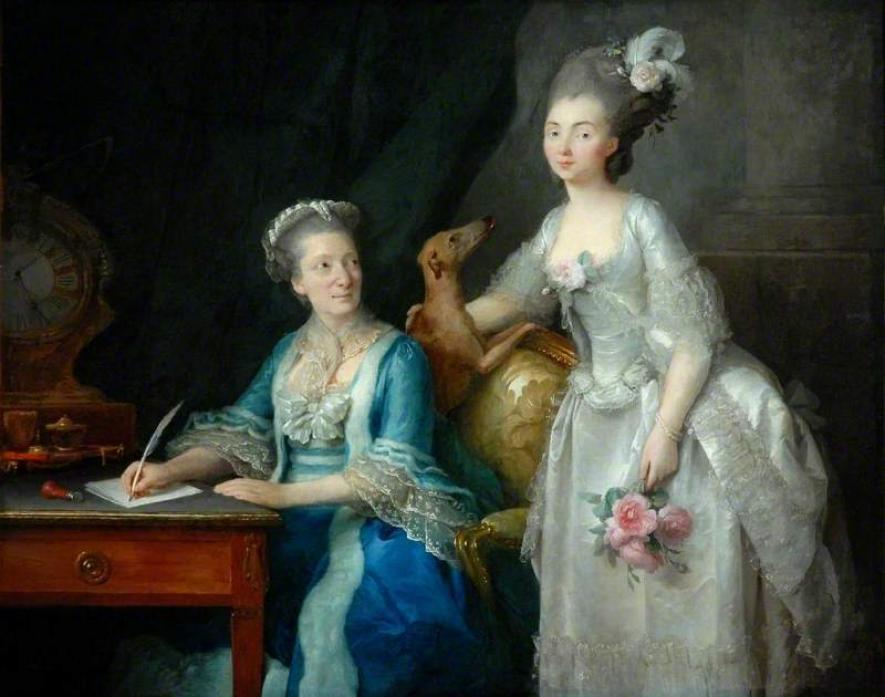The year is 1775. France. King Louis XVI is on the throne and his consort is Marie-Antoinette. We do not know who the sitters were for this painting titled Elderly Woman with Her Daughter. We do know it was painted by Anne Vallayer-Coster in the year in which Charles Dickens set the opening for his book, A Tale of Two Cities.
Vallayer-Coster achieved fame and recognition early in her career. In 1770, aged 26, she was accepted into the French Royal Academy of Painting – one of only four women before 1789. Her father was royal goldsmith Joseph Vallayer who worked at Gobelins royal tapestry factory in Paris. She was effectively self-taught, though she had some training from Madeleine Basseport (royal botanical painter) and Joseph Vernet (a celebrated marine painter).
This was an era when women artists were forbidden from drawing from the nude model, so Vallayer-Coster had to be content with still life, considered the lowest artistic level. Her wonderful depictions of flowers made her work stand out and caught the eye of Marie Antoinette, resulting in her being awarded space in the Louvre in 1781 – again, unusual for women – and where some of her works still reside. When she married wealthy lawyer Jean-Pierre Silvestre Coster at the courts of Versailles, Marie Antoinette signed the marriage contract as witness.
In The Bowes Museum, Elderly Woman with Her Daughter looks down on a writing desk which belonged to the French queen. How many letters, one wonders, did Marie Antoinette compose on its polished surface. Interestingly the desk, which bears royal identification marks on its underside, also doubles as a dressing table, for the angled rest swivels to reveal a mirror on the reverse side (write a note or right your make-up as occasion demands). It uses cogs to open and close and is an early example of mechanical furniture.
Vallayer-Coster, despite her noble status by marriage and her royal connections, somehow escaped the bloody pandemonium of the French Revolution, but her career could not escape the consequences of the fall of the monarchy. During Napoleon’s reign, Empress Josephine acquired two of her works, but her reputation had by then faded. Vallayer-Coster exhibited her last painting in 1817 at the Paris Salon. She died age 73 in 1818, having painted more than 120 still lifes.
Forty-five years later John and Josephine Bowes bought this painting in Paris for 1,000 francs, probably to hang in their museum although it is equally possible that it was to adorn the walls of one of their homes. Joséphine was a romantic and, though never a mother herself, who is to say her heart was not moved by this compelling image of the maternal bond? As well as still lifes, Vallayer-Coster produced some portraits and genre paintings – people in everyday situations, whether real or imagined by the artist. So maybe this was a romanticised view, given there are so many visual clues to what the painting is saying: flowers for youth, clock for passage of time and generations, dog for affection and loyalty. And those expressions: the hopeful, open-eyed countenance of a young woman, and a proud parent who, in just a glance, manages to convey unlimited love for her fledgling child. (Read more.)
Tota pulchra es Maria
5 days ago


















No comments:
Post a Comment